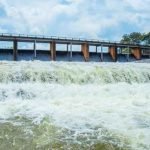A hydraulic pump is a device that converts linear motion to hydraulic energy. The fluid, upon exiting the pump will have a higher velocity and pressure than at entry.
It must be noted that the pump does not produce pressure but flow, it has the ability to do this at elevated pressures.
Hydraulic pumps are used in a wide scope of engineering fields. They are also available in a variety of designs. This is such that each type is fitted with a different internal mechanism based on the same fundamental principles.
Common mistakes
Here are some common mistakes that end users tend to make when it comes to proper maintenance practices of the hydraulic pumps.
Oil Change
It is important to note that there but two conditions that warrant a hydraulic oil change: degradation of the base oil or depletion of the additive package. As such, before changing the oil based on hours of service, one should be sure to refer to the actual condition of the oil. This can be achieved through a comprehensive oil analysis.
On the other hand, it is best to ensure that the oil is viscous. This is because viscosity is a vital feature for the oil as it affects both pump performance as well as life cycle of the same. Oil viscosity largely determines the maximum and minimum oil temperatures within which the hydraulic pump can safely operate.
Also Read: These factors will help you minimize total pump life cycle cost
For instance, using oil with a viscosity that’s too high for the climate under which the machine operates will hamper oil flow as well as lubrication. Similarly, using oil that is too thin will not meet the minimum viscosity requirements as well as adequate lubrication.
Filter change and location
Just as oil changes require the utmost accuracy, changing the filters should be equally important. This is because changing the filters based on schedule negates the necessity of accuracy. As such, filter changes should be made when all their dirt-holding capacity is used up, but before the bypass valve opens. This thus requires a mechanism to monitor the pressure drop across the filter element. It should alert the end user once this point is reached.
That being said, there are filter locations that are wrong and as such tend to do more harm than good and can rapidly destroy the components they were installed to protect. These are the pump inlet and drain lines.
Overheating
Few equipment operators continue to operate an engine that is overheating. Unfortunately, this is not the case when the same happens to a hydraulic system. Furthermore, just like an engine, the fastest way to destroy a hydraulic pump components, seals, hoses and the oil itself is high-temperature operation.
Be as it may, the average temperature range is highly dependent on the rate of change in viscosity with temperature of the oil, as well as the type of hydraulic components in the system.
These three are only some among the many mistakes which are made by pump equipment operators and that end up giving them a run for their money when they breakdown as more often than not one is forced to acquire new equipment.







